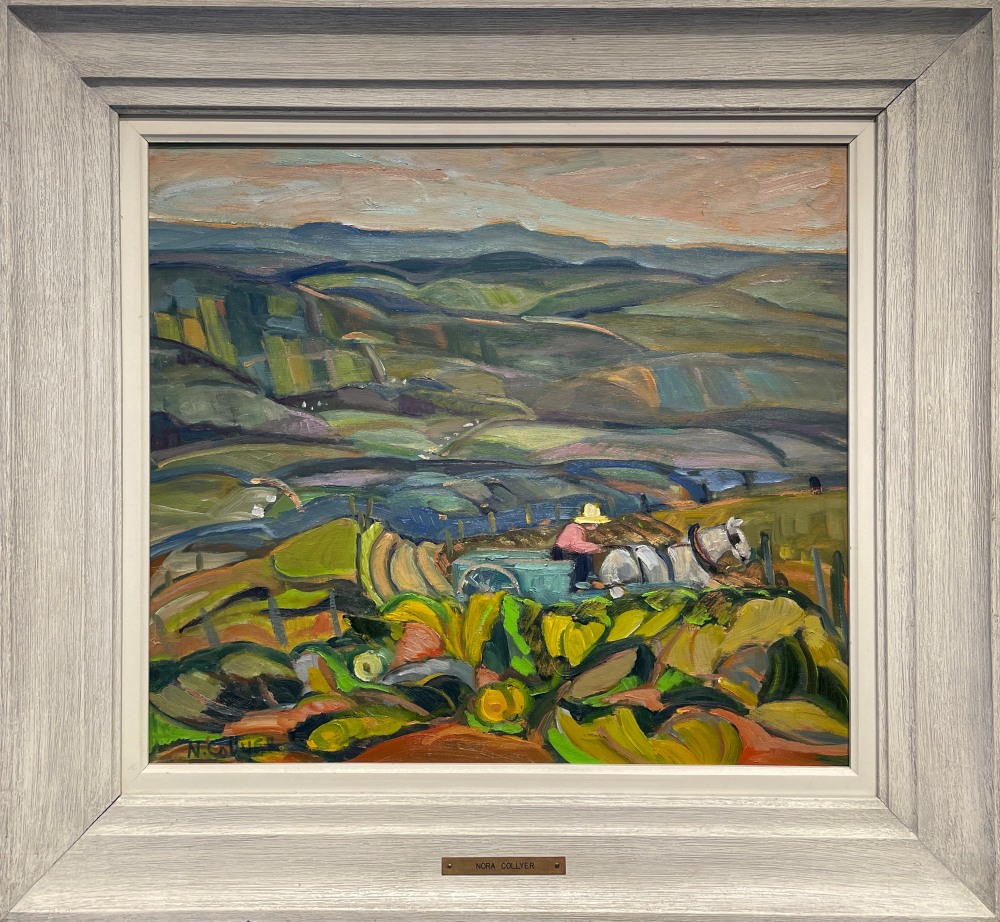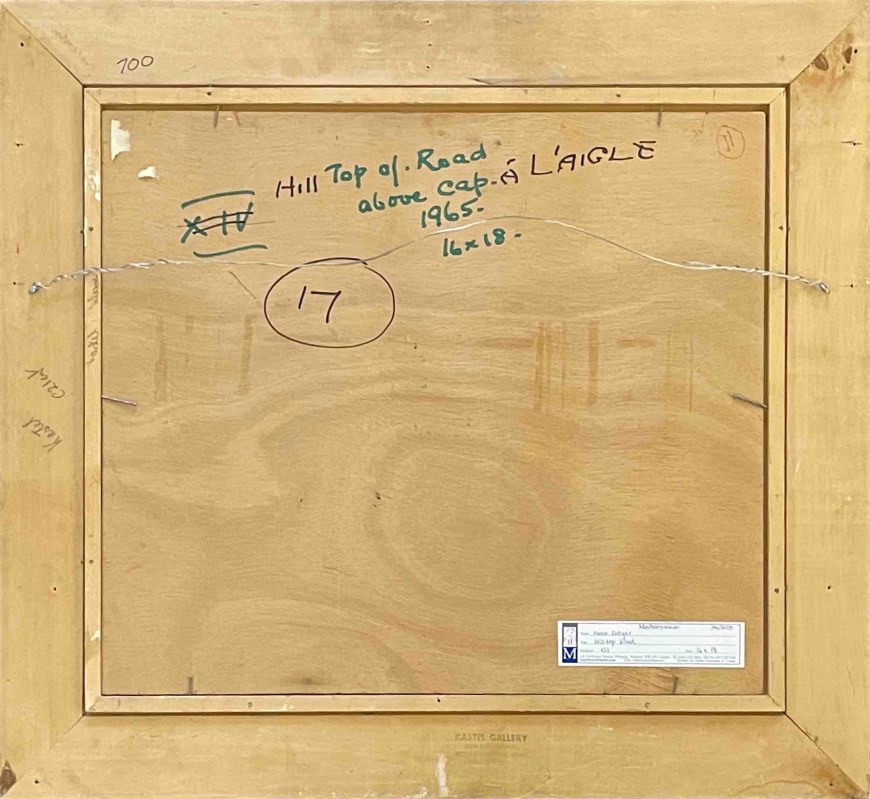40.6 x 45.7 cm
Inscriptions
signed, 'N. Collyer' (lower left); titled, dated and inscribed, 'Hill top of Road/above Cap Á L'AIGLE/ 1965/ 16x18' (verso, centre)Provenance
Kastel Gallery, Montreal
Mayberry Fine Art, Winnipeg
Private collection, Winnipeg
We offered a rare and particularly fine composition featuring a Charlevoisien at work and a vista of the rolling hills beyond Cap-à-l’Aigle.
Reviewing Nora Collyer’s solo exhibition at our original family art Gallery, Walter Klinkhoff Gallery in 1964, the distinguished art critic for the Montreal Star, Robert Ayre wrote:“ she loves ripeness, the fatness of the land, the snugness of the villages in the hills, and celebrates them in full bodied colour and easy, comfortable rhythms.”[1]
Collyer’s subjects are the farms, orchards and fields of the eastern Townships, near Foster/Brome, Quebec where first her family had a property, then later from Strawberry Hill in nearby Magog, an important body of painting at Cap-à-l’Aigle opposite Murray Bay in Charlevoix County, and urban work painted close to her Westmount home. She is characteristic of the circumstance of many Beaver Hall women who had to juggle the responsibilities of looking after family members while making a living with her art and teaching art as a career.
A student of Maurice Cullen and William Brymner at the Art Association of Montreal, Nora Collyer was the youngest member of the Beaver Hall Group. Collyer moved into the now-famous building located at 305 Beaver Hall Hill in 1921, and for three years shared a studio there with Anne Savage. She began exhibiting with the Royal Canadian Academy (R.C.A.) as early as 1922. From 1925 to 1930, she was a teacher at Trafalgar School, a private all girl school, located just a block from Galerie Alan Klinkhoff, Montreal. She retired from “Traf” after 5 years, following the death of her mother, in order to manage the household for her father and brother. Her paintings were included in several exhibitions of the Canadian Group of Painters and one of her works was included in the exhibition of Canadian paintings in the Canadian Pavilion at the 1939 World's Fair in New York. She continued to teach, first at the Art Association of Montreal (the art school at the originally named Montreal Museum of Fine Arts) and then gave private lessons from her home on Elm in Westmount.
______________________
Footnote:
[1] Barbara Meadowcroft, Painting Friends: The Beaver Hall Women Painters (Québec: Vehicule Press, 1999), 127.













